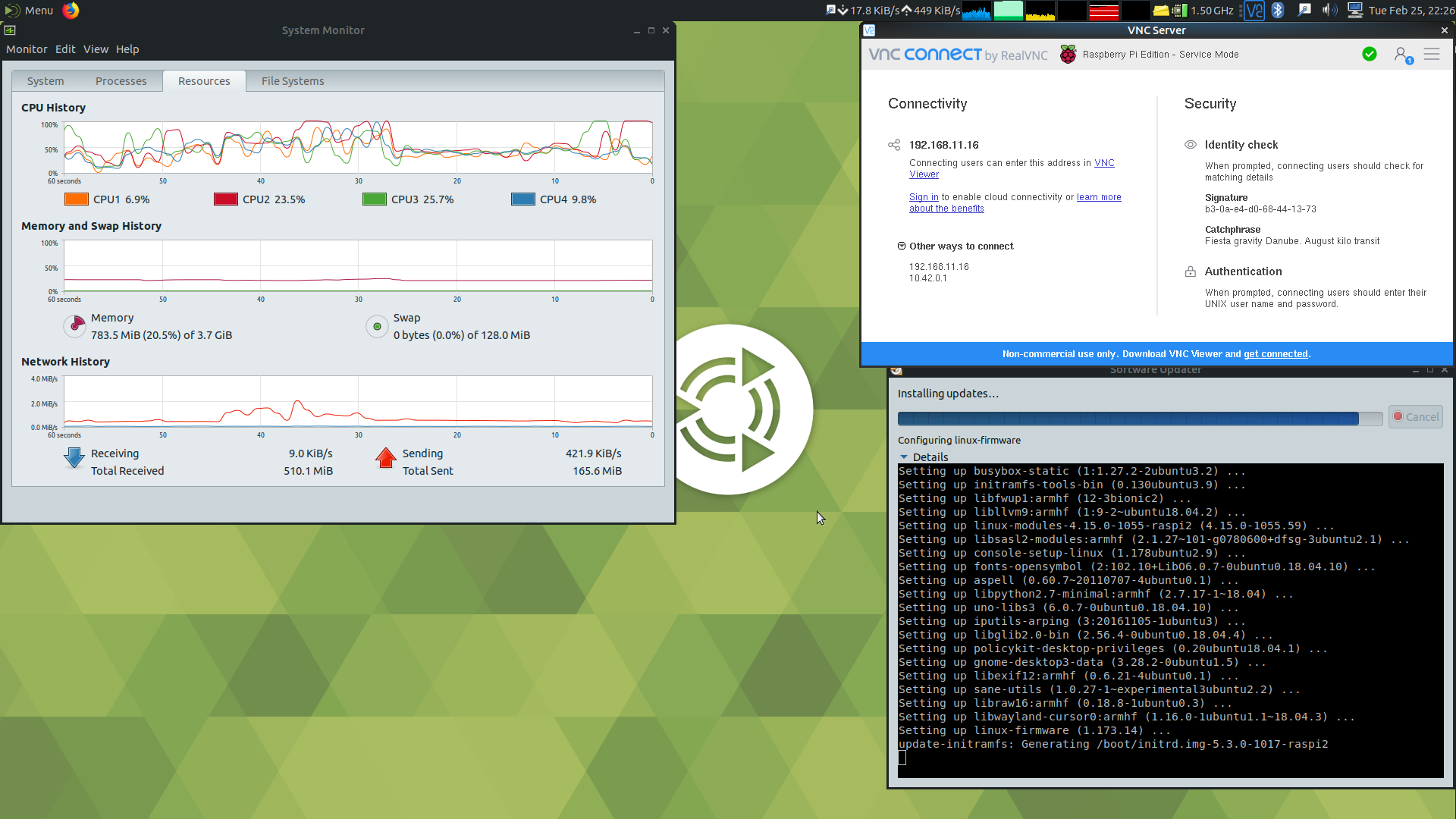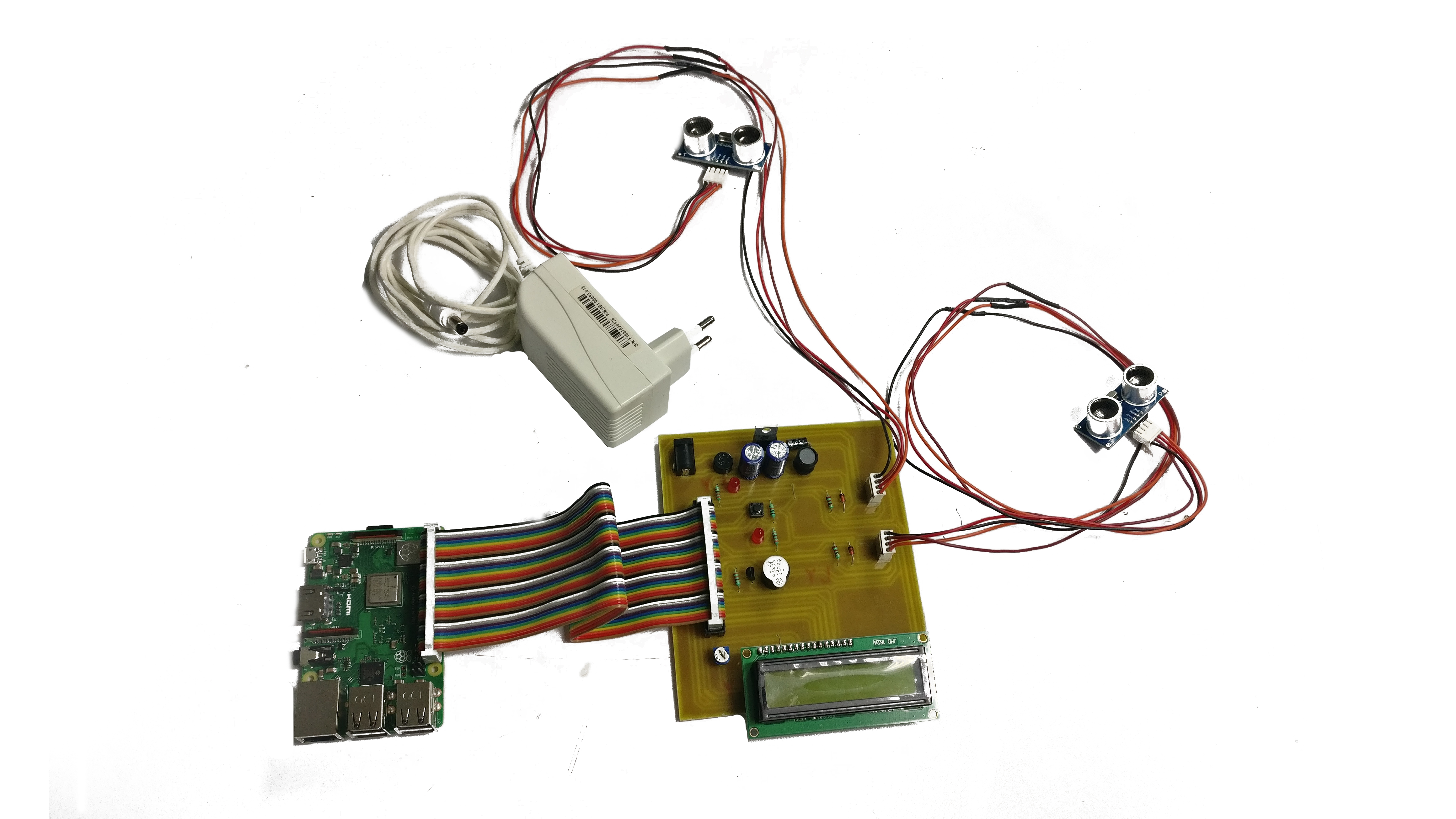Mastering Remote IoT Monitoring With SSH: A Free Guide For Raspberry Pi, Ubuntu, And Mac Users
Hey there, tech enthusiasts! If you're diving into the world of remote IoT monitoring, you're about to discover some seriously cool stuff. Whether you're tinkering with a Raspberry Pi, running Ubuntu on your machine, or using a Mac, this guide is your ultimate companion. Remote IoT monitoring with SSH is not just a buzzword; it's a game-changer for anyone serious about automating and managing devices remotely. So, buckle up and get ready to unlock the potential of your IoT setup without breaking the bank.
This journey will take you through the ins and outs of setting up SSH for remote IoT monitoring. We’ll cover everything from the basics to advanced tips, ensuring you can manage your devices seamlessly. The best part? You can do all of this for free, leveraging the power of open-source tools like Raspberry Pi and Ubuntu.
Now, let’s be honest—remote IoT monitoring sounds intimidating at first. But fear not! By the end of this guide, you’ll be confidently setting up SSH connections, downloading necessary files, and managing your IoT devices like a pro. Let’s dive in and make this tech dream a reality!
What is Remote IoT Monitoring and Why Does It Matter?
Remote IoT monitoring is essentially the process of keeping an eye on your Internet of Things (IoT) devices from afar. Whether it’s a weather station, a home automation system, or an industrial sensor network, being able to monitor these devices remotely is crucial. It saves time, enhances security, and allows for real-time troubleshooting.
Using SSH (Secure Shell) as the backbone of your remote monitoring setup ensures that your data is transmitted securely. SSH provides encrypted communication between your local machine and the remote IoT device, making it a reliable choice for anyone concerned about cybersecurity.
Why Choose SSH for Remote IoT Monitoring?
Here’s why SSH is the go-to protocol for remote IoT monitoring:
- **Security:** SSH encrypts all data exchanged between devices, protecting sensitive information from prying eyes.
- **Reliability:** It’s a battle-tested protocol that has been trusted by IT professionals for decades.
- **Compatibility:** SSH works seamlessly across different operating systems, including Raspberry Pi, Ubuntu, and Mac.
- **Cost-Effective:** You don’t need expensive proprietary software. SSH is free and open-source!
With SSH, you can manage your IoT devices without worrying about unauthorized access or data breaches. It’s a win-win situation for both hobbyists and professionals alike.
Setting Up SSH on Raspberry Pi for IoT Monitoring
Raspberry Pi is a favorite among IoT enthusiasts due to its affordability and versatility. Setting up SSH on a Raspberry Pi is surprisingly straightforward, even for beginners. Follow these steps to get started:
Step 1: Enable SSH on Raspberry Pi
Enabling SSH on your Raspberry Pi is a breeze. Here’s how:
- Boot up your Raspberry Pi and log in to the desktop environment.
- Open the Raspberry Pi Configuration tool (you can find it in the Preferences menu).
- Navigate to the "Interfaces" tab and select "SSH."
- Choose "Enable" and click "OK." That’s it! SSH is now active on your Raspberry Pi.
Step 2: Find Your Raspberry Pi’s IP Address
Knowing your Raspberry Pi’s IP address is essential for establishing an SSH connection. Use the following command in the terminal:
hostname -I
This will display the IP address of your Raspberry Pi. Jot it down—you’ll need it in the next step.
Step 3: Connect to Your Raspberry Pi via SSH
Connecting to your Raspberry Pi via SSH is as simple as typing a single command in your terminal. Here’s how:
- Open Terminal on your Mac or Ubuntu machine.
- Type: ssh pi@YOUR_RASPBERRY_PI_IP_ADDRESS
- When prompted, enter the password for your Raspberry Pi (default is usually "raspberry").
Voilà! You’re now connected to your Raspberry Pi via SSH and ready to start monitoring your IoT devices.
SSH on Ubuntu: A Seamless Experience
Ubuntu users are in luck because SSH is already installed by default on most versions of the operating system. Here’s how you can leverage SSH for remote IoT monitoring:
Step 1: Install SSH Server
First, ensure that the SSH server is installed on your Ubuntu machine:
sudo apt update
sudo apt install openssh-server
Step 2: Configure SSH Settings
Tweak your SSH settings to enhance security and performance. Open the SSH configuration file:
sudo nano /etc/ssh/sshd_config
Here, you can customize options like port numbers, password authentication, and more. Remember to restart the SSH service after making changes:
sudo systemctl restart ssh
Step 3: Connect to Remote IoT Devices
Connecting to a remote IoT device via SSH on Ubuntu is identical to the process on a Mac. Simply use the command:
ssh username@REMOTE_DEVICE_IP
That’s all there is to it! You’re now ready to monitor your IoT devices securely and efficiently.
SSH on Mac: The Apple Way
Mac users, rejoice! macOS comes pre-equipped with SSH, making it incredibly easy to set up remote IoT monitoring. Follow these steps to get started:
Step 1: Open Terminal
Find Terminal in your Applications > Utilities folder or use Spotlight to search for it. Once open, you’re ready to roll.
Step 2: Connect to Your IoT Device
Use the following command to connect to your IoT device:
ssh username@REMOTE_DEVICE_IP
Enter your password when prompted, and you’ll be connected in no time.
Step 3: Explore Advanced SSH Features
Mac users can take advantage of additional SSH features, such as port forwarding and secure file transfers. These tools enhance your IoT monitoring capabilities and make your workflow more efficient.
Downloading Necessary Files for IoT Monitoring
Whether you’re using Raspberry Pi, Ubuntu, or Mac, you’ll need to download certain files to set up your IoT monitoring system. Here’s how to do it:
Step 1: Identify Required Software
Depending on your project, you may need software like Mosquitto for MQTT communication, Node-RED for visual programming, or InfluxDB for data storage. Identify the tools that suit your needs.
Step 2: Download and Install
Use the package manager on your respective platform to download and install the necessary software. For example, on Ubuntu:
sudo apt install mosquitto node-red influxdb
On Raspberry Pi, the process is similar:
sudo apt install mosquitto node-red influxdb
Step 3: Verify Installation
After installation, verify that the software is running correctly. Use commands like:
sudo systemctl status mosquitto
node-red
influx -version
This ensures that everything is set up properly and ready for use.
Best Practices for Secure IoT Monitoring
Security should always be a top priority when it comes to IoT monitoring. Here are some best practices to keep your system safe:
1. Use Strong Passwords
Avoid using default passwords like "raspberry" or "password." Opt for strong, unique passwords that are difficult to guess.
2. Enable Two-Factor Authentication
Add an extra layer of security by enabling two-factor authentication for SSH connections.
3. Regularly Update Software
Keep your operating system and installed software up to date to protect against vulnerabilities.
4. Monitor Logs
Regularly check your system logs for any suspicious activity. This can help you identify and address potential security threats early.
Troubleshooting Common Issues
Even the best-laid plans can encounter hiccups. Here are some common issues you might face and how to fix them:
Issue 1: Unable to Connect via SSH
Check the following:
- Ensure SSH is enabled on the remote device.
- Verify the IP address and port number.
- Make sure there are no firewall rules blocking the connection.
Issue 2: Slow Connection Speeds
Optimize your SSH settings by tweaking parameters like compression and cipher algorithms. This can significantly improve performance.
Issue 3: File Transfer Errors
Use tools like SCP (Secure Copy Protocol) for reliable file transfers. If errors persist, check your network connection and file permissions.
Real-World Applications of Remote IoT Monitoring
Remote IoT monitoring isn’t just theoretical—it has practical applications across various industries. Here are a few examples:
1. Smart Agriculture
Farmers use IoT sensors to monitor soil moisture, temperature, and humidity levels. With SSH, they can access this data remotely and make informed decisions about irrigation and crop management.
2. Industrial Automation
Manufacturers rely on IoT devices to monitor machinery performance and predict maintenance needs. SSH ensures secure and reliable access to these devices.
3. Home Automation
From smart thermostats to security cameras, IoT devices are transforming homes. Remote monitoring via SSH allows homeowners to control and manage their smart devices from anywhere.
Conclusion
And there you have it—a comprehensive guide to mastering remote IoT monitoring with SSH on Raspberry Pi, Ubuntu, and Mac. By following the steps outlined in this article, you can set up a secure and efficient IoT monitoring system for free. Remember to prioritize security, stay updated with the latest tools and techniques, and don’t hesitate to troubleshoot if issues arise.
Now, it’s your turn to take action! Try out the steps we’ve discussed, experiment with different configurations, and share your experiences in the comments below. Who knows? You might just inspire someone else to dive into the world of IoT monitoring. Happy tinkering!
Table of Contents
- What is Remote IoT Monitoring and Why Does It Matter?
- Setting Up SSH on Raspberry Pi for IoT Monitoring
- SSH on Ubuntu: A Seamless Experience
- SSH on Mac: The Apple Way
- Downloading Necessary Files for IoT Monitoring
- Best Practices for Secure IoT Monitoring
- Troubleshooting Common Issues
- Real-World Applications of Remote IoT Monitoring
- Conclusion



Detail Author:
- Name : Tiana Hoeger Jr.
- Username : schroeder.chet
- Email : ihyatt@weimann.net
- Birthdate : 1974-05-05
- Address : 280 Langworth Road Lake Emerald, TX 04783
- Phone : +13163927244
- Company : Klocko, Turner and Lakin
- Job : Airline Pilot OR Copilot OR Flight Engineer
- Bio : Omnis cum ab dolor ut molestiae. Officiis voluptatum quia dolor et. Est impedit maxime quae et.
Socials
linkedin:
- url : https://linkedin.com/in/tjohnston
- username : tjohnston
- bio : Dolores eum consequatur est est.
- followers : 1089
- following : 1060
tiktok:
- url : https://tiktok.com/@tabitha_xx
- username : tabitha_xx
- bio : Quia fugit vel possimus nesciunt alias voluptatem.
- followers : 5456
- following : 2040
instagram:
- url : https://instagram.com/tabitha.johnston
- username : tabitha.johnston
- bio : Nihil minima laborum repellendus. Numquam eum sunt culpa autem ratione ut non.
- followers : 1763
- following : 1535
facebook:
- url : https://facebook.com/tabitha5077
- username : tabitha5077
- bio : Qui dolorum quia modi distinctio voluptatem eius voluptatum.
- followers : 5075
- following : 133
twitter:
- url : https://twitter.com/tabitha.johnston
- username : tabitha.johnston
- bio : Et tempore velit dolores sunt error rem. Corporis velit aut aut iusto voluptatem sequi.
- followers : 2174
- following : 1095